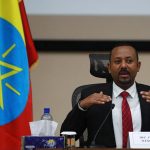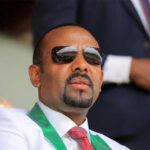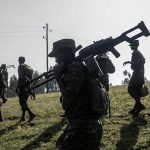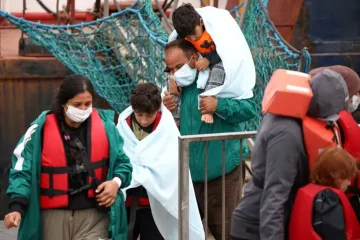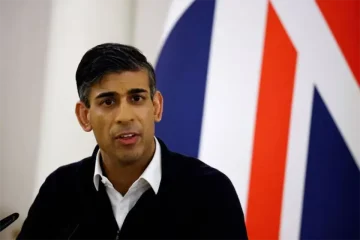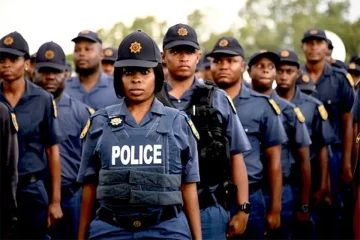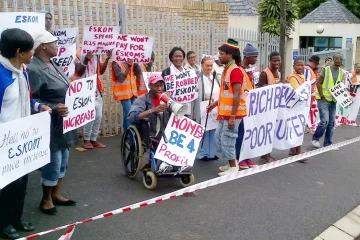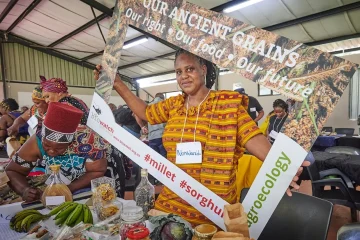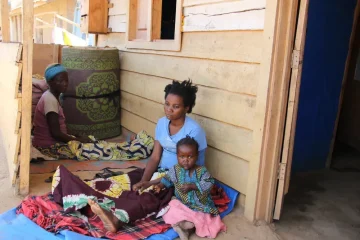TWO attempts have been made over the past six years to broker peace between the Ethiopian government and the armed rebel group Oromo Liberation Front. The armed group was formed half a century ago to carve out an independent state for Oromia, the country’s largest regional state.

Both attempts at brokering peace – in 2018 and again in 2023 – ended in failure and a return to violence.
Oromia is Ethiopia’s largest and most populous region. The Oromo Liberation Front has sought autonomy for the region since the group emerged in 1973. It was briefly part of a transitional government led by the Ethiopian People’s Revolutionary Democratic Front coalition in 1991. Since then, the Oromo Liberation Front has continued to wage a low-level armed struggle against the government.
Prime Minister Abiy Ahmed rose to power in 2018 following the abrupt resignation of his predecessor, Hailemariam Desalegn. At the time the country was reeling from widespread unrest, particularly in the Oromia and Amhara regions. Among Abiy’s surprise reforms was amnesty for numerous outlawed rebel groups harboured by Eritrea that were waging war on the government.
The most prominent of these was the Oromo Liberation Front, which had been based in neighbouring Eritrea. Subsequently, the Oromo Liberation Front announced a ceasefire, made a peace agreement with the Ethiopian government in the Eritrean capital, Asmara, and later entered Ethiopia.
However, the details of the peace agreement were not made public and there was no clarity on its legal grounds. The peace agreement soon failed to deliver the expected outcome of peace, amid renewed violence.
I am a political scholar of Ethiopia with an interest in the country’s federal governance and constitution. My 2022 research paper examined the main reasons for the failure of the 2018 peace agreement.
I found that the most notable reasons were:
- there was no signed pact, which meant that there was no clear plan
- the presence of competing factions within the Oromo Liberation Front
- a lack of political will from both sides
- the absence of a democratic ethos among both parties.
Many peace agreements between the Oromo Liberation Front and Ethiopia had been concluded since the early 1990s but did not bring the required stability. They were not durable because they did not address the factors at the core of their dispute. It is my view that these reasons also played a big part in the failure of the subsequent rounds of peace talks in 2018 and 2023.
A lasting peace can only be achieved when conflicting parties are willing to address the fundamental problems that trigger Ethiopia’s political challenges.
A failed peace pact
The first signs of failure came in September 2018, when more than 60 non-Oromo civilians were killed in the Oromia region on the outskirts of western Addis Ababa. This alarmed many Ethiopians because it occurred shortly after the agreement was made.
Later, Hachalu Hundessa, a popular Oromo singer, was assassinated in Addis Ababa. The government claimed that the assassination was part of the Oromo Liberation Front’s anti-government plot. This heightened the tension between the front and the Ethiopian government. On 23 June 2018, there was also an assassination attempt targeting Abiy.
From here on mutual suspicions overshadowed the peace agreement. It eventually collapsed for the following reasons.
No signed document: A clear roadmap is central to post-conflict recovery and a pillar of any peace agreement. The 2018 Asmara peace agreement was reached without a written signed accord.
In August 2018, the Oromo Liberation Front leadership declared a unilateral ceasefire in response to Abiy’s request for dialogue with armed groups. This led to the 7 August 2018 peace agreement to halt hostilities and restore peace and stability.
The deal was short-lived. Conflicting reports about what was agreed were traded between the government and the Oromo Liberation Front. The absence of a signed peace agreement made the environment more volatile.
Competing factions within the Oromo Liberation Front: The emergence of new factions has historically been the party’s weak point. Less than eight months after returning to Ethiopia, one Oromo Liberation Front faction and the army wing released a statement stating that the Oromo Liberation Army had separated from the front.
Over time, the Oromo Liberation Front has splintered into at least eight different groups. These include the Oromo Liberation Army, the Oromo Liberation Front, a secret grouping known as Abba Torbe and the Oromo Democratic Front, which denounces the use of violence.
The extent to which the Oromo Liberation Front controls its armed wing is unclear. According to the Life and Peace Institute, an international peacebuilding lobby,
it is difficult for the government to identify OLF combatants…there is no clear definition between members, fighters and supporters.
The divisions within the Oromo political elite and the history of competition among the Oromo opposition forces point to the failed peace effort.
Lack of political goodwill: It appears that although the moment might have appeared ripe for a peace agreement in 2018, neither party was ready for such an agreement. The government tried to exercise strong control from the centre and was reluctant to manage conflict peacefully with the Oromo Liberation Front.
The peace agreement was short-lived largely due to the absence of open and genuine commitments by both sides. The absence of a democratic ethos on both sides also weakened the agreement.
Unclear demands: The Oromo Liberation Front’s political options have not been clear and consistent. It’s not clear at any given time whether their demand is substantial autonomy for the Oromo people within an Ethiopian federation or an independent sovereign Oromo state. The strategy swings wildly between a political solution and an armed struggle.
Difficult environment to pursue peace
Following the 2018 Asmara peace agreement, the internal political intricacies of Ethiopia drastically deteriorated. The democratic reform and euphoria brought by Abiy Ahmed, which included him winning the 2019 Nobel Peace Prize, soon faded.
One of the factors that made Ethiopia less stable after the peace agreement was the postponement of elections, partly due to the COVID-19 pandemic. The government’s decision to delay the election was considered a power grab and an unconstitutional term extension. It was rejected by most opposition parties and it led to the war with the Tigray regional government.
Ethiopia has since descended into civil war with ethnically motivated killings, religious conflict and displacement throughout the country. These constraints weaken the Ethiopian government’s ability to implement any peace agreement. It’s the setting in which a new round of peace talks in Tanzania was also doomed to fail.
- This article is republished from The Conversation under a Creative Commons license. Read the original article.


